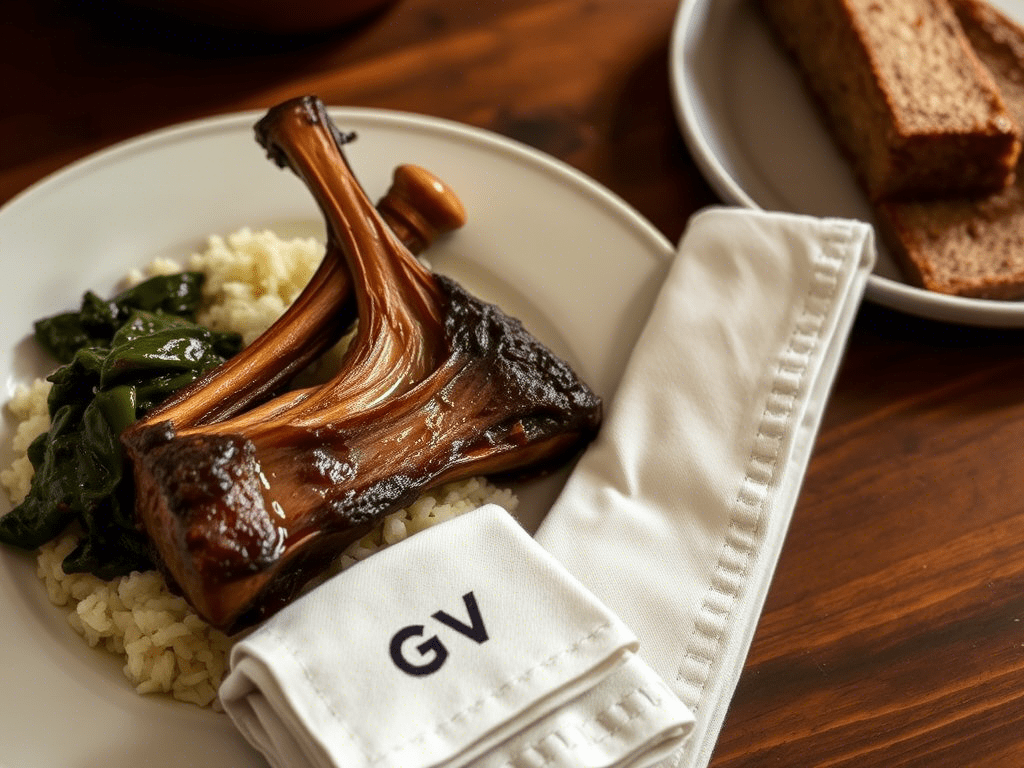Tender & Irresistible Neck Bones: 5 Mouthwatering Ways to Cook Them Right
Neck bones may not be the fanciest cut of meat, but when cooked right, they deliver fall-off-the-bone flavor that’s hard to beat. Whether you’re working with pork or beef, neck bones are rich in taste, budget-friendly, and packed with comfort food vibes.
These underrated cuts shine in everything from slow cooker meals to oven-baked dinners. They soak up flavor like a sponge and turn meltingly tender with a bit of patience. If you’ve never tried them or always wondered how to cook them just right, you’re in the right place.
In this guide, we’ll break down how to boil, bake, and slow cook neckbones to juicy perfection, share the best flavor pairings, and help you avoid common mistakes that can ruin a good meal.
Table of Contents
What Are Neck Bones, Exactly?
If you’ve never cooked neck bones before, you’re in for a flavorful surprise. These bones come from the neck portion of pork or beef and are known for their rich taste, tender texture, and collagen-packed meat. While they might look a little rugged at first glance, neck bones are a staple in Southern cooking, soul food, and global comfort dishes for a reason.
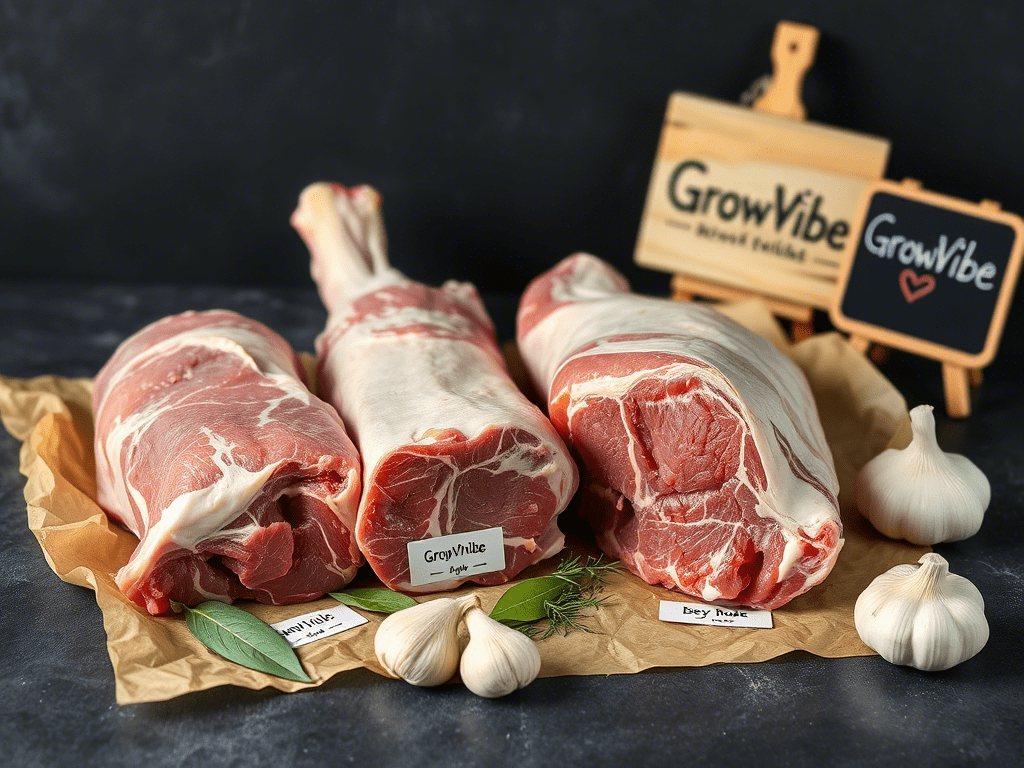
Bone-in Flavor That’s Hard to Beat
Unlike boneless cuts, neckbones offer something extra: flavor from the bone marrow and connective tissue. When cooked low and slow, this collagen breaks down into gelatin, giving your dish that silky, melt-in-your-mouth finish. That’s why many home cooks and seasoned chefs prefer them in slow braises, soups, and stews.
Pork Neck Bones vs. Beef Neck Bones
Most recipes call for pork neck bones, which are easier to find and more affordable. Pork neck bones have slightly more fat and cook down into tender chunks that easily fall off the bone. Beef neck bones are larger and meatier, often used in hearty stews or broth-based dishes. Both are packed with flavor and respond well to slow cooking.
Why You Shouldn’t Overlook Them
In many cultures, neck bones are seen as the kind of cut that turns humble ingredients into something special. Whether you’re learning how to make slow cooker neck bones or preparing a baked version for Sunday dinner, this cut rewards patience and delivers serious depth of flavor.
So if you’ve ever passed over neck bones at the butcher or thought they were too tough to tackle, think again. They might not be filet mignon, but with the right method, they’ll steal the show.
Ingredients You’ll Need (Basic + Optional Flavor Boosts)
Cooking neck bones doesn’t require fancy ingredients, but the right mix of seasoning and aromatics makes a big difference. Whether you’re learning how to boil them, slow cook them, or bake them in the oven, here are the essentials you’ll want to have on hand.
Basic Ingredients (For Any Cooking Method)
These ingredients form the foundation of any great neckbones recipe:
- 2 to 3 pounds of pork neck bones (or beef neck bones, if preferred)
- 1 large onion, chopped
- 4 to 5 cloves garlic, minced or smashed
- Salt and black pepper, to taste
- Bay leaves (1 to 2 for boiling or braising)
- Water or low-sodium broth (enough to cover the bones in a pot or slow cooker)
These basics are enough to create deep, savory flavor, especially if you’re just getting started with a simple slow cooker neck bones recipe or learning how long to boil neck bones for maximum tenderness.
Optional Flavor Boosters
Want to take things up a notch? Add these for extra layers of taste:
- Apple cider vinegar (1 to 2 tablespoons): Enhances flavor and helps tenderize the meat
- Smoked paprika or cayenne: For a smoky or spicy kick
- Seasoning blends: Cajun, Creole, or all-purpose Southern seasoning work great
- Celery and carrots: For broth-based dishes or stews
- Tomato paste: Adds richness, especially in oven-baked dishes
- Soy sauce or Worcestershire: Deepens umami in baked or braised versions
Ingredient Tip:
Neck bones are forgiving. Don’t stress if you’re missing one or two ingredients. The cooking method does most of the work. Just be sure you’ve got enough liquid, the right amount of seasoning, and enough time for the meat to break down slowly.
How to Boil Neck Bones (Step-by-Step)
Boiling is one of the easiest and most traditional ways to cook this cut of meat. It’s simple, affordable, and results in deeply flavorful meat that practically falls off the bone. Whether you’re making a soup base or planning to shred the meat for another dish, this method delivers consistent results every time.
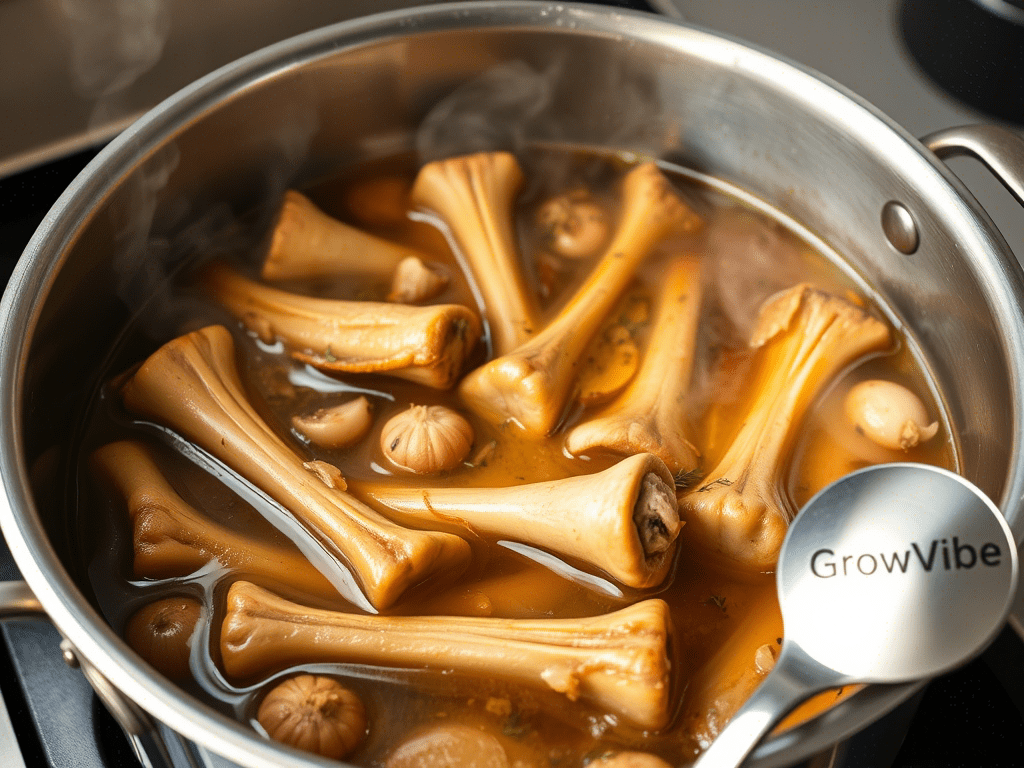
Step-by-Step Instructions
Step 1: Rinse and Trim
Start by rinsing your meat under cold water. Trim off any visible excess fat or gristle if needed. This helps keep the final broth clean and flavorful.
Step 2: Start with a Cold Pot
Place the bones in a large stockpot and cover them with water or low-sodium broth. Add onion, garlic, a bay leaf, salt, and pepper. Optional: add vinegar or your favorite seasoning blend for more flavor depth.
Step 3: Bring to a Simmer, Not a Boil
Heat the pot over medium-high until it just starts to bubble. Then reduce the heat to low. Avoid rapid boiling — simmering gently will keep the meat tender and the broth clear.
Step 4: Skim the Foam
After 15 to 20 minutes, use a spoon to skim off any foam or impurities that rise to the surface. This helps you get a cleaner, richer broth.
Step 5: Simmer Low and Slow
Let everything simmer for 2 to 3 hours. If you’re wondering how long it takes to get tender results, this is the sweet spot. The meat should be soft, easy to pull apart with a fork, and full of flavor.
Step 6: Strain or Serve
Remove the bones from the pot using tongs. You can serve the meat whole or shred it and use it in other recipes like stews, sandwiches, or rice dishes. Strain the broth if you want to store or freeze it for soups.
Bonus Tip
Let the meat rest in the warm liquid off the heat for 10–15 minutes before serving. It helps the flavor soak in and keeps everything juicy.
This boiling method works well for both pork and beef cuts, and it’s a great starting point for other cooking styles later in the article.
Slow Cooker Neck Bones: Set It and Forget It
If you’re looking for a hands-off way to make this comforting cut of meat, the slow cooker is your best friend. It does all the work while you go about your day, and the results are always tender, flavorful, and satisfying.
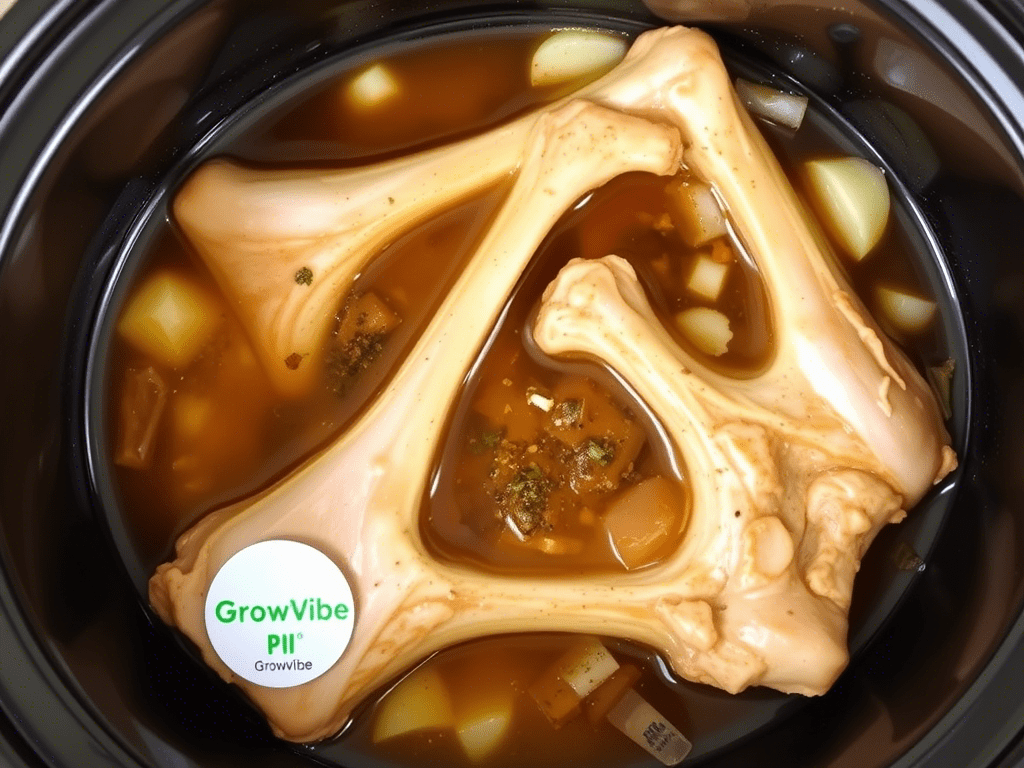
Why Use a Slow Cooker?
This method is perfect for busy days, meal prep, or low-effort dinners. The low heat and steady cook time break down tough connective tissue and create juicy meat with minimal input from you.
How to Do It Right
Step 1: Prep the Ingredients
Rinse and pat dry your meat. Place it in the slow cooker along with chopped onion, garlic, salt, pepper, and any seasoning blend you like. Add broth or water until it just covers the meat.
Step 2: Add Flavor Layers
For extra richness, include ingredients like vinegar, smoked paprika, Worcestershire sauce, or bay leaves. You can even toss in some chopped celery or carrots for added depth.
Step 3: Set the Time
- Cook on low for 6 to 8 hours
- Or on high for 3½ to 4½ hours
Make sure the meat is tender and pulls away from the bone with little effort before serving.
Step 4: Rest Before Serving
Once it’s done, turn off the slow cooker and let the meat sit in the warm liquid for 10–15 minutes. This keeps everything juicy and flavorful when it hits the plate.
Bonus Serving Tip
Spoon some of the cooking liquid over rice, mashed potatoes, or cornbread for a full comfort meal. The liquid is rich with flavor and makes the perfect sauce.
This slow cooking method transforms a tough cut into something fork-tender with almost no effort.
How to Bake Pork Neck Bones for Crispy Edges
If you like your meat with rich flavor and caramelized edges, baking is the way to go. This method creates tender, oven-roasted neck bones with a crispy exterior and deep, developed taste.
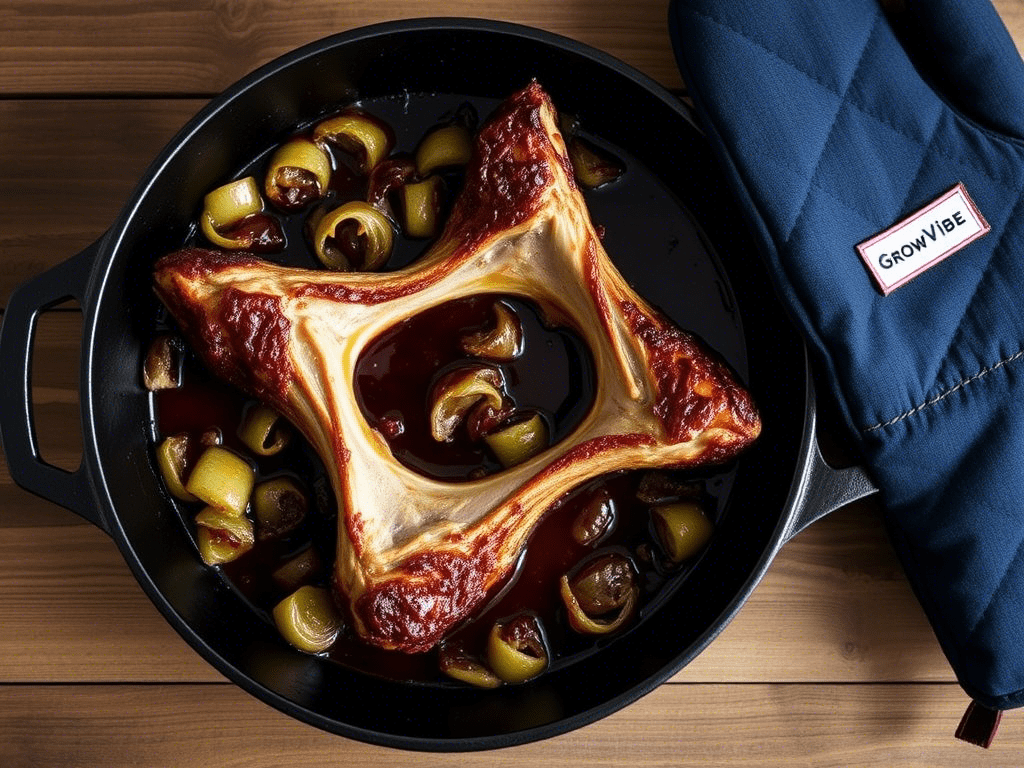
Why Bake Them?
While boiling and slow cooking give you juicy results, baking brings texture. The dry heat of the oven helps reduce excess fat and creates those crispy edges that many people love. It’s especially good if you’re preparing seasoned or marinated pork.
Step-by-Step: How to Bake Pork Neck Bones
Step 1: Preheat and Prep
Set your oven to 350°F (175°C). Lightly grease a baking dish or roasting pan. Rinse the neck bones and pat them dry with paper towels.
Step 2: Season Generously
Place the bones in the pan and season well with salt, pepper, garlic powder, paprika, and your preferred spice blend. For extra moisture and flavor, add sliced onions or a splash of broth to the bottom of the pan.
Step 3: Cover and Bake
Cover the pan tightly with foil. Bake for 1½ hours, then remove the foil and continue baking uncovered for another 30 to 40 minutes. This helps the meat brown and develop crisp edges.
Step 4: Check for Tenderness
Pierce with a fork to check if it’s done. The meat should pull away from the bone easily. If not, cover and bake a little longer.
Step 5: Optional Finish Under the Broiler
For extra crispiness, place the pan under the broiler for 2 to 3 minutes after baking. Watch closely so it doesn’t burn.
Serving Idea
Serve your baked pork neck bones with roasted potatoes, greens, or over rice. Spoon a little pan juice on top for added flavor.
Baking is one of the most flavorful ways to cook this cut of meat. It’s simple, hands-off, and delivers that home-style taste many of us grew up with.
Flavor Tips: From Spices to Broth Add-ins
No matter how you cook them—boiled, baked, or slow cooked—neck bones shine when seasoned right. The meat itself is flavorful, but the real magic happens when you layer in spices, aromatics, and liquids that soak into every bite.

Build a Flavor Base
Start with the essentials. A strong foundation of onion, garlic, salt, and pepper is a must for any good neck bones recipe. From there, you can tailor the taste to match your cravings or the meal you’re serving.
Spice Options That Work Every Time
Here are some seasoning combos that work beautifully across all methods:
- Southern-style: Smoked paprika, cayenne, garlic powder, onion powder, and thyme
- Cajun/Creole: Cajun seasoning, oregano, and a dash of hot sauce
- Asian-inspired: Soy sauce, ginger, garlic, and a splash of sesame oil
- Smoky BBQ: Dry rub with brown sugar, cumin, black pepper, and liquid smoke
These blends go well whether you’re slow cooking, boiling, or learning how to bake pork neck bones with a twist.
Broth Additions for Extra Depth
Instead of just water, try these flavorful liquids for a next-level finish:
- Chicken or beef broth for richness
- Apple cider vinegar to balance fat and tenderize
- Tomato paste or crushed tomatoes for stew-style dishes
- Worcestershire or soy sauce for umami depth
- Bay leaves and celery for aromatic depth in boiled dishes
If you’re preparing slow cooker neck bones, layering flavor with both dry spices and wet ingredients makes a huge difference by the time it’s done.
Marinate or Dry Rub in Advance
Want even more flavor? Let the meat sit with seasoning for a few hours before cooking. This works especially well if you’re baking or roasting. The flavors penetrate deeper and give your pork neck bones that craveable, slow-cooked taste even faster.
This cut may be humble, but the flavor possibilities are endless. Use what you have, don’t be afraid to experiment, and make each version your own.
What to Serve with Neck Bones
Once your neck bones are perfectly cooked, you’ll want sides that match their deep, savory flavor. Whether you slow-cooked, boiled, or baked them, the right pairings take the whole meal to the next level.

Southern Comfort Pairings
- Collard greens – Simmered low and slow, just like your main dish
- Cornbread – Soaks up all those flavorful juices
- Black-eyed peas – A hearty, traditional Southern match
- Mac and cheese – Creamy, cheesy, and a guaranteed crowd-pleaser
These sides are classic for a reason. They balance the richness of the meat while giving the plate variety and texture.
Rice and Starch Staples
If you want something simple and filling, try:
- White rice – Perfect for spooning broth or gravy over
- Mashed potatoes – Especially good with baked pork neck bones
- Buttered noodles – Quick and kid-friendly
- Polenta or grits – Great texture and mild flavor
These starches let the meat shine while keeping your meal satisfying and comforting.
Veggie Sides for Balance
Add brightness and freshness with:
- Roasted carrots or sweet potatoes
- Skillet cabbage with onions
- Green beans with garlic
- Steamed broccoli or zucchini
Light veggies bring balance to a dish that’s otherwise rich and hearty. A squeeze of lemon or splash of vinegar on the side can cut through the fat and keep things fresh.
Make It a Full Plate
A serving of slow-cooked meat over rice with sautéed greens and cornbread? That’s a comfort food masterpiece. Whether you’re using leftovers or starting from scratch, neckbones work beautifully in soul food spreads, casual family dinners, or even meal prep boxes.
Common Mistakes to Avoid
Cooking neck bones isn’t difficult, but there are a few common pitfalls that can get in the way of tender, flavorful results. Avoiding these mistakes can be the difference between dry, tough meat and a dish that melts in your mouth.
1. Not Trimming Before Cooking
Some store-bought neckbones come with excess fat or connective tissue that won’t break down properly. Giving them a quick trim before cooking helps avoid greasy broth or chewy bites.
2. Skipping the Sear (When Baking)
If you’re baking or roasting, take a few minutes to sear the meat in a hot pan first. It adds depth and brings out the natural flavor of pork neck bones, especially if you’re using dry rubs or a marinade.
3. Using Only Water
Water gets the job done, but it doesn’t bring much to the table. Broth, wine, vinegar, or even tomato juice will add flavor and richness. When cooking slow cooker neck bones, always use a flavorful liquid to build a better base.
4. Overcrowding the Pot or Pan
Give the meat some space. If you’re boiling or braising, too much meat packed together can lower the temperature and lead to uneven cooking. In the oven, it stops the edges from crisping.
5. Rushing the Cook Time
Low and slow is the name of the game. Wondering how long to boil neck bones? The answer is: until they’re fork-tender, and that cannot be rushed. The same goes for baking and slow cooking. Trying to speed things up usually means tough meat and weak flavor.
6. Not Letting the Meat Rest
After cooking, let the meat sit in the warm liquid for at least 10 minutes. This locks in moisture and ensures every bite is tender and juicy.
7. Underseasoning
Don’t hold back. These cuts soak up flavor beautifully. Season every step of the way, from broth to final touches, and taste as you go.
How to Store and Reheat Neck Bones
When you cook a big batch of neck bones, you’ll likely end up with leftovers. Good news: they store well and taste even better the next day. Here’s how to keep them fresh and reheat them properly without drying them out.
Refrigerating
Let the neck bones cool down completely before storing. Place them in an airtight container along with a bit of the cooking liquid to keep the meat moist.
- Fridge life: 3 to 4 days
- Store in shallow containers for faster cooling
If you made slow cooker neck bones, don’t leave them sitting in the pot too long after it’s turned off. Get them into the fridge once they’re cool to the touch.
Freezing
Want to keep your leftovers longer? Freezing works well.
- Use freezer-safe containers or heavy-duty zip bags
- Add some broth before freezing to prevent freezer burn
- Label with the date
Frozen neckbones will stay good for about 2 to 3 months. Thaw them in the fridge overnight before reheating.
Reheating Options
There are several ways to bring them back to life:
1. On the Stove
Place the meat in a saucepan with a splash of broth or water. Cover and heat on low until warmed through.
2. In the Oven
Preheat to 300°F, place the neck bones in a baking dish with some cooking liquid, and cover tightly with foil. Heat for about 20 to 30 minutes.
3. In the Microwave
Not ideal for large portions, but works in a pinch. Use a microwave-safe dish, cover loosely, and heat in short bursts to prevent drying out.
Reheating gently helps maintain that tender texture. Avoid high heat, which can toughen the meat.
Are Neck Bones Healthy?
Neck bones aren’t just flavorful. They also come with a few nutritional benefits that might surprise you. While they’re not considered lean cuts, they can fit into a balanced diet when prepared thoughtfully.
Protein-Packed Goodness
Neck bones are rich in protein, which helps support muscle health and keeps you full longer. A single serving contains a solid amount of protein, especially when served with hearty sides like beans or rice.
Collagen and Bone Health
When simmered or slow-cooked, these cuts release collagen and gelatin into the cooking liquid. This is especially helpful for joint support and digestion. That’s part of what makes broths and stews made with neckbones so satisfying and nourishing.
The Fat Factor
Pork neck bones do contain a fair amount of fat. However, much of it can be skimmed off after cooking. Boiling and baking methods naturally reduce fat content more than frying or heavy sauces.
If you’re watching your fat intake, here are a few tips:
- Trim visible fat before cooking
- Skim fat from the surface of the broth
- Pair with fiber-rich vegetables and whole grains
Sodium Awareness
As with many comfort dishes, salt can add up quickly. Use low-sodium broth and go easy on added salt if you’re planning to season generously with dry rubs or sauces.
In moderation and with smart prep, neck bones can be a comforting, protein-rich option that brings more to the table than just flavor.
FAQs About Neck Bones
Q1: Are pork neck bones and beef neck bones the same?
Not exactly. Pork neck bones are smaller, have more fat, and cook down into tender, fall-apart pieces. Beef neck bones are larger, meatier, and often used for hearty soups and stews. Both work great, but the cooking time and flavor profile will differ slightly.
Q2: How long should you boil neck bones?
The sweet spot is around 2 to 3 hours. Boiling low and slow helps break down the connective tissue and collagen, giving you that tender texture. If the meat isn’t falling off the bone, it needs more time.
Q3: Can I cook neck bones from frozen?
Yes, but it’s best to thaw them first. Frozen neck bones will release excess water and may dilute your broth or marinade. If you’re using a slow cooker, always thaw the meat to ensure even cooking.
Q4: What’s the best method for beginners?
Boiling is the easiest for first-timers. It’s low risk, low effort, and hard to mess up. Just throw everything in a pot, simmer, skim, and let time do the work. You’ll learn a lot about flavor layering along the way.
Q5: What can I do with leftover meat?
Tons of things. Shred the cooked meat and use it for:
- Tacos
- Sandwiches
- Rice bowls
- Pasta dishes
- Soups and stews
Leftover neckbones are great for meal prep or next-day comfort food.
Final Thoughts
Neck bones might not be the most glamorous cut of meat, but when treated right, they deliver serious flavor and comfort. Whether you boil them low and slow, roast them to crispy perfection, or toss them in a slow cooker, they always bring that old-school home-cooked magic.
They’re affordable, versatile, and surprisingly rich in nutrients like collagen and protein. And now that you know how to make them shine with the right techniques and pairings, it’s time to turn your kitchen into a comfort food haven.
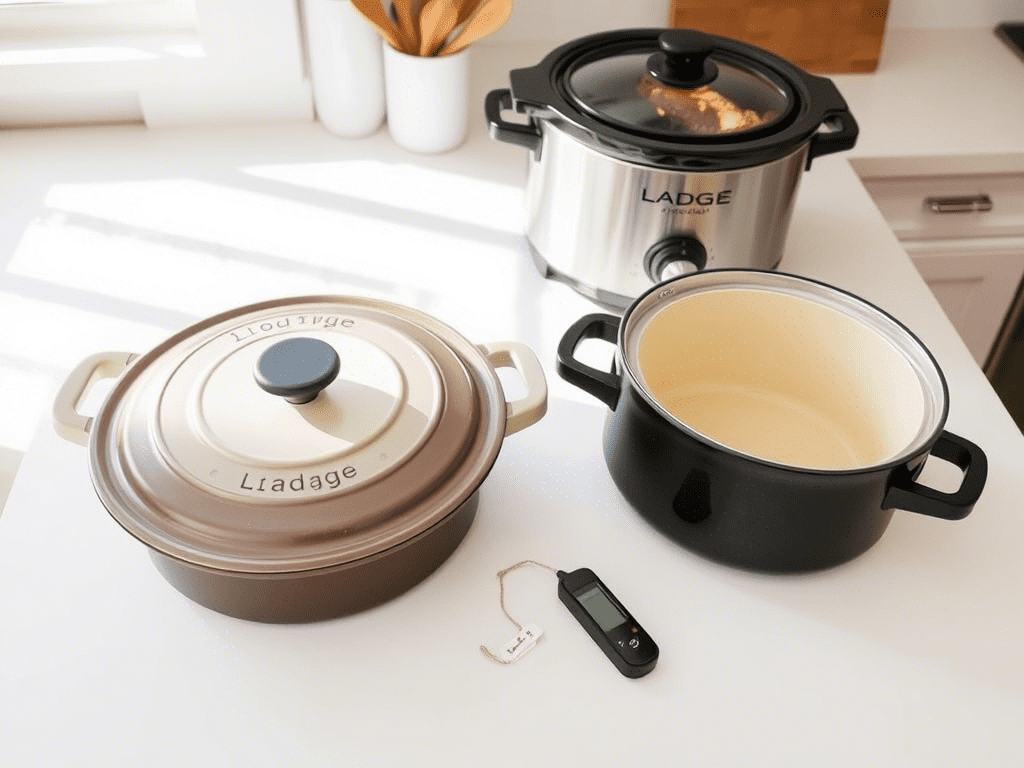
Internal Links to Explore
Looking for more hearty recipes and flavor-packed dishes? Check these out:
- How to Make Chicken Seasoning That Works on Everything
- Cream Cheese Pound Cake Recipe
- Sweet and Sour Sauce Recipe
Neck Bone Cooking Essentials
Here are a few highly rated items to help you cook neckbones like a pro:
- Hamilton Beach Slow Cooker, 6-Quart Programmable – Perfect for set-it-and-forget-it neck bone meals.
- Lodge Cast Iron Dutch Oven – Ideal for boiling or baking pork neck bones with deep flavor.
- Better Than Bouillon Roasted Pork Base – Boosts broth flavor for any cooking method.
(As an Amazon Associate, GrowVibe may earn from qualifying purchases. Your support helps keep these guides free.)
(As an Amazon Associate, GrowVibe may earn from qualifying purchases. Your support helps keep these guides free.)

